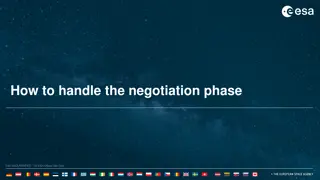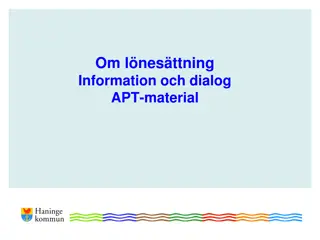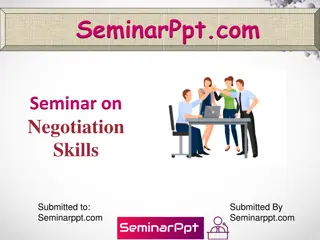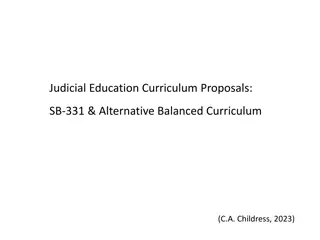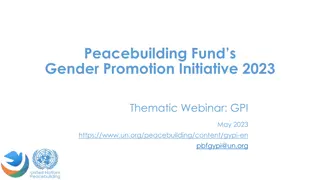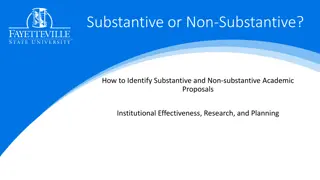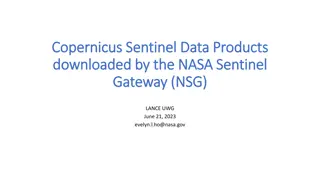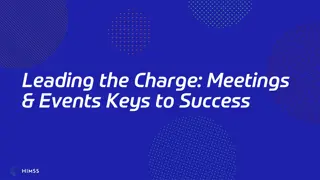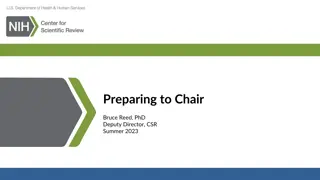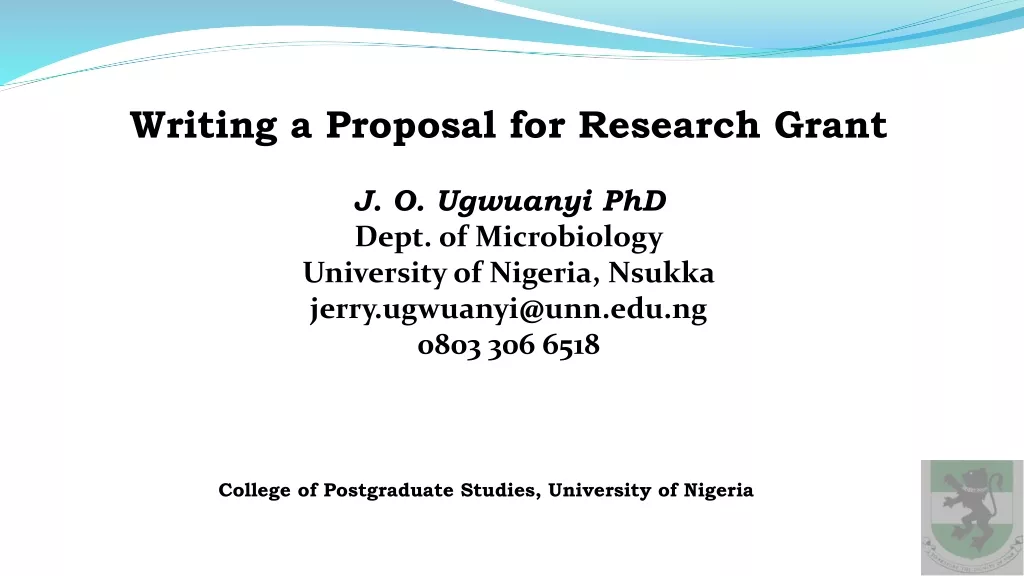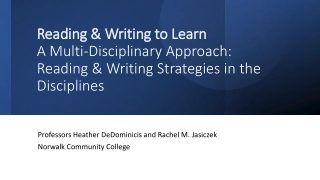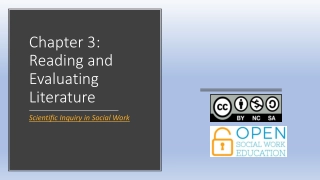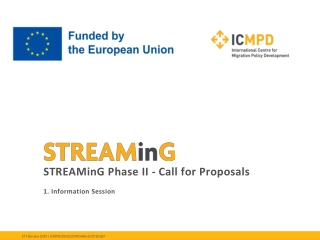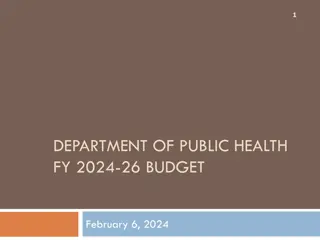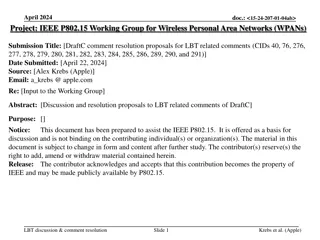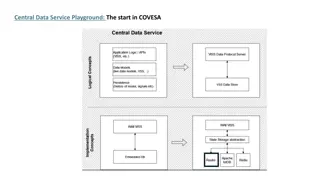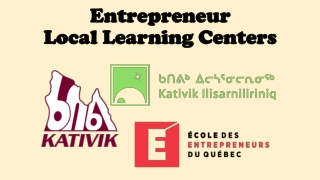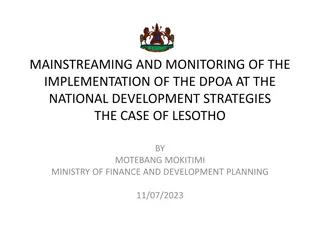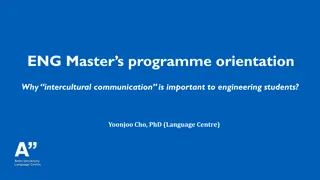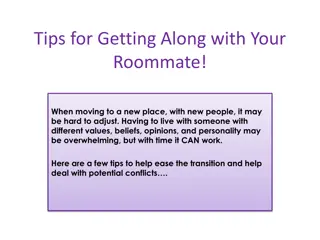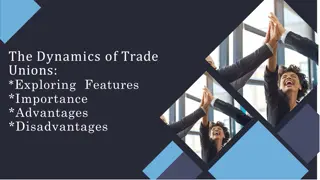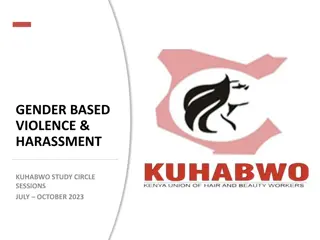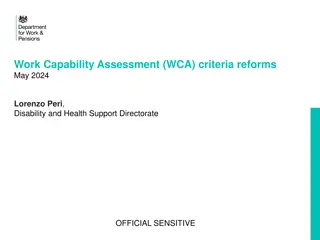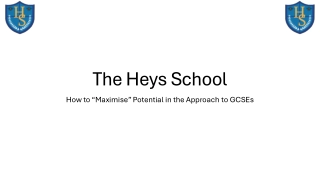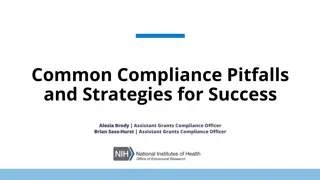Effective Strategies for Negotiation Success in ESA Proposals
Learn how to navigate the negotiation phase effectively in ESA proposals to maximize benefits and secure successful outcomes. This guide covers key steps, responsibilities, and ways to avoid common pitfalls during the negotiation process. Get insights on handling negotiation points, recording discussions, and utilizing annexes to ensure a smooth negotiation experience.
Download Presentation
Please find below an Image/Link to download the presentation.
The content on the website is provided AS IS for your information and personal use only. It may not be sold, licensed, or shared on other websites without obtaining consent from the author. Download presentation by click this link. If you encounter any issues during the download, it is possible that the publisher has removed the file from their server.
Presentation Transcript
How to handle the negotiation phase 1 ESA UNCLASSIFIED - For ESA Official Use Only
Table of Content 1. General overview 2. Negotiation phase 3. Contract signature & Kick-off Meeting (KOM) 2
Disclaimer This presentation material is intended to provide an insight into the negotiation process of activities arising from PECS Call for Proposals only. It is not relevant for other ESA ITTs or calls. The slides give a generalisation of the process and each case may be slightly different due to the contents of the proposal and specifics of the CfP as listed in the Cover letter The rules, regulations and conditions contained in the respective documentation published on esa- star, as well as instructions received by the relevant Contracts Officer in any direct communication, for that call take priority. 3
Overview This training course is intended to explain the main steps expected during the negotiation phase and to help the entities take the maximum benefit from this period and achieve a successful negotiation for their activities It covers the period between the ESA approval of an activity submitted in an Open Call and the kick-off meeting It mainly addresses the things that must be done after the receival of the acceptance letter and before signing a contract: What are the main steps (with expected timeline) Who is responsible for initiating each steps What needs to be done and how to avoid typical mistakes Receiving the Letter of Acceptance DOES NOT mean that a Contract will be necessarily placed! 5
Negotiation phase key points Negotiation Points template (MoM of Negotiation Meeting) What is expected from the Entity Example of negotiation points (technical, management/planning, costing) [incl. examples of answers to negotiation points how to respond and avoid typical mistakes] How to record the discussion and track decisions and actions Use of Annexes to Negotiation MoM 8
Negotiation phase in detail - After final approval from ESA Boards, ESA prepares and sends the negotiation points and the invitation to the negotiation meeting (together with a draft contract for review) Entity prepares the answers directly in the provided template (it is already in the form of Minutes of Meeting to facilitate the process), at least 4 days prior to meeting Negotiation meeting between ESA and entity After the meeting, the Entity provides the Minutes of Meeting (MoM) updated according to the discussions held during the meeting, also recording for each negotiation points if it is closed or the actions to closure Once finalised, ESA and the Entity will sign the MoM it forms part of the contract! - - - - 10
Negotiation Points template (MoM) The template with negotiation points sent by ESA is already in the form of Minutes of Meeting. It consists of three main parts: 1. Cover Page of MoM with some preliminary info (date, participants, objectives, etc.) this page will be signed at the end of the negotiation 2. Negotiation points (with answers, tracking of discussion and actions, and final status) see the structure in the next slides 3. Summary and Annexes Summary with general info (contract starting date, progress reports timeline, AOB, etc.) Mandatory Annexes: Summary Table, Milestone Payment Plan, Table of Deliverables Optional Annexes: updated GANTT chart, updated WBS, PSS forms, etc. 11
Negotiation Points template (MoM) Why The Minutes of Meeting are so important: The MoM becomes an Applicable Document of the project (i.e. part of the contract) The agreements in the MoM supersede the proposal (e.g. list of deliverables, GANTT chart, etc.) The MoM contains the final agreed time schedule (with actual start and end dates) The Negotiation Meeting is usually the first meeting with the ESA TO and it is important to track the technical discussions held during the meeting 12
Negotiation Points template (MoM) Management nego points Header Summary + AOB nego points Technical 13
Summary 14
Examples 15 15
Negotiation Points - Structure Negotiation Point (NP-x): Text to explain the negotiation point (it is derived from the indications provided by the TEB) The Bidder is requested to clarify and to provide Response inputs provided before the negotiation meeting: Here the Entity must provide the answer BEFORE the negotiation meeting Summary of the discussion: This part is filled AFTER the negotiation meeting to track the discussion held during the meeting NP-x Status: This part is filled AFTER the negotiation meeting to specify the status of the negotiation point: - Open - Closurepending the update of answer or the provision of additional information (updated workflow, updated GANTT, etc.) - Closed the negotiation phase is successful when all the NPs will be closed 16
Negotiation Points - Language Typical language and what it means: Must be clarified The wording or intention was unclear or ambiguous, the bidder shall explain what their intention was in more detail Shall be justified An element was proposed (typically a requirement, design choice or meeting) without due reasoning and where other approaches/ choices could have been taken. Explain the reasoning. Shall be reduced or strongly justified Typically for hours or costs. The amount is considered unreasonable for the work and the bidder shall re-assess and propose a more reasonable amount or augment the work description such that hidden work driving the hours / costs is made explicit. To be provided An element of the proposal was missing or not provided in sufficient detail. Provide this missing element (typically as a separate annex to the MoM To be updated The information was not enough, was inconsistent, or other discussion have affected this element and an update of the whole element is needed. (typically for planning for example) 17
Negotiation Points - Language Typical language and what it means: Shall be removed Certain elements are not agreed to be funded/ part of the scope the bidder shall remove these and adjust the cost and planning accordingly. Shall be added Additional work is being requested. The bidder shall add this to the WPD and update costing and planning accordingly Shall be re-balanced/ adjusted The overall cost/ hours/ duration is considered fitting but how it is allocated to parts of the project is not. These shall be re-allocated without changing the overall budget/ duration. High level The discussion/ information was insufficiently detailed. Generic The proposed approach/ discussion was insufficiently tailored to the subject and could be equally applicable to many things. 18
Technical Negotiation Point (Example A) Negotiation Point: The analysis of the state-of-the-art is considered largely not sufficient and does not provide any information on what is already available on the market, who are the competitors, what has already been developed in order to highlight the benefits stemming from the proposed activity. This needs to be addressed to ensure a good requirements baseline in view of a competitive service. The Bidder is requested to provide a comprehensive and detailed analysis of the state-of-the-art on the subject of the proposal, also identifying the benefits and the added value of the proposed solution. State of the art shall include a comprehensive analysis on the topic: Scientific background and context (where relevant) Existing solutions / products / services already available Main competitors (both in Europe and Worldwide) Benefit (in terms of performances, costs, etc.) of the proposed solution that mean it will be competitive on the market The text shall be clear, concise and respond to the exact request explained in the NP!! Avoid generic discussions, or statements that the request will be addressed in the course of the activity 19
Technical Negotiation Point (Example B) Negotiation Point:The workflow logic is considered too high-level and not sufficiently consistent with the proposed technical steps. Therefore, the workflow shall be reworked in order to better reflect the technical steps to be performed. It shall at least include: 1) the consolidation of the requirements 2) a testing/validation phase (in terms of functionalities and performances) at the end of the development 3) the key review points. The Bidder is requested to provide an updated workflow diagram. Include the reviews and decision points Consistency with traceability) Parallel/serial consistency (consistent with GANTT chart) Sub-contractor work is clear Dependencies clear WBS (and easy See the Proposal Writing Training Course! is logical 20
Management / Planning Negotiation Point (Example C) Negotiation Point: The GANTT chart is considered too high-level. The different duration of tasks and their dependencies are not presented, and the WPs duration is not justified. The Warranty period is out of scope. As such, the GANTT chart shall be reworked and better detailed. The Bidder is requested to provide an updated GANTT chart. Include the reviews and main milestones Consistency with WBS (and easy traceability) Consistency with workflow logic Explain the duration of the main work packages and sub-WPs / tasks Dependencies are clear See the Proposal Writing Training Course! 21
Costing Negotiation Point (Example D) Negotiation Point: Concerning the PSS forms of the Prime, the cost allocated to Other Direct Cost for External Service (EUR xx,xx) are presented under Exhibit A. However, they are not sufficiently detailed nor justified. Subcontractor A is included as External Services, which is considered not correct, as there is no description of the work assigned to them and it is therefore difficult to assess the related costs. This point shall be clarified and corrected. The Bidder is requested to provide an updated set of PSS forms to address the points mentioned above. Exhibit A : Details the cost allocated to hardware and services: justified by scope of work? Not representing infrastructure? Not representing normal work items? Sufficiently identified? Reasonable cost? TIPS: Cost must be detailed and verifiable against current market price External Services: clearly described? Clearly needed? Value for money? Referenced in the proposal? TIPS: allowed in case of purchasing the services of a testing facility (i.e., there is no specific work assigned to a sub-contractor) or the services of a data delivery platform See the Proposal Writing Training Course! 22
Mandatory Annexes Summary Table Can be the same person 24
Mandatory Annexes Milestone Payment Plan In finalized MoM, these should be actual dates 25
MoM Finalization The negotiation phase goes on until all the negotiation points are clarified to the satisfaction of ESA, and all the decisions and requested information is clearly inserted in the MoM. Note ESA aim for a maximum of 2 negotiation meetings, lack of agreement in this timeframe can lead to the negotiation being declared unsuccessful. Once all the negotiation points have been closed, the MoM will be signed by both parties The Contract Officer will then prepare the final version of the Contract and send to the Bidder for signature 27
KOM preparation and Advance Payment After Contract signature: Now that the contract is signed, there is no need to CC the ESA Contract Officer, unless specific contractual questions arise. Please keep the CDO and the TO in CC of all communications with ESA representatives related to this contract. Kick-Off Planning The Contractor, TO and CDO shall agree on a date for the KO meeting (if different from what agreed in the negotiation). It is always recommended to invite also the Subcontractors the full team is desired, both on the technical and management side. A KO meeting is not mandatory if all parties agree at the nego that it is not needed. KO Meeting Preliminary Agenda. (roughly 1h) Welcome and introductions Short presentation of project (technical objectives, tasks, schedule and GANTT chart, milestone reviews, deliverables, etc.) Project management (progress reports, review meetings, internal meetings, etc.) Plan for the next steps / next meetings Any Other Business 30
KOM preparation and Advance Payment Minutes of Meeting In all formal meetings with ESA, the Prime Contractor is responsible to prepare the minutes of meeting for review and approval. You may use whatever meeting minute format your company uses to produce the minutes. Mandatory aspects: Each MoM has a unique reference number and any Action Items raised are clearly listed and are tracked to closure throughout the project, any MoM containing decisions or Actions are SIGNED by both parties. A draft of the minutes is requested within 5 business days of the meeting best practice is during the meeting or day after. Progress Reports As agreed in the negotiation, a Progress Report is due every x months (1, 2, 3 or 6). ESA will deliver a template for the Progress Report but contents are agreed with the TO. The progress report is intended to provide a high level management view of the project relative to the contractual deliverables and original planning in the contract. It is not a technical note and should have only highlights with respect to technical details. 31
KOM preparation and Advance Payment Advance Payment You may now submit for the Advance Payment Request (series 8xxxxxxxxx) on ESA-P system. Please consult the contract on how to get access to ESA-P. Please submit your APR as per instructions in the attached guide (page 12): http://esa-p-help.sso.esa.int/Quick_Guide_How_to_submit_a_Confirmation_or_Invoice_or_APR.pdf Once submitted, our Finance Department will pay it as soon as possible. As agreed, the Advance Payment is a loan against MS1 and MS2. Once MS1/MS2 will be achieved, you will have to submit an invoice (series 7000xxxxxx) and confirmation (6000xxxxxx) for the remaining balance of the MS1/MS2 payment. PECS Activity Achievement Summary Slide For ESA promotion of PECS projects, we ask you to complete the 1-page slide called Achievement Summary. ESA will provide the template. It is for ESA internal use, so we can highlight the capabilities of your team to interested internal parties. If we want to display it outside ESA we will ask you for approval in advance. It should be updated as you deem appropriate as the project progresses. Check http://esa-p-help.sso.esa.int/ In case of questions and issues, please contact: ESA Helpdesk at esait.Service.Desk@esa.int 32
KOM Meeting 33
www.esa.int www.esa.int 34 34


